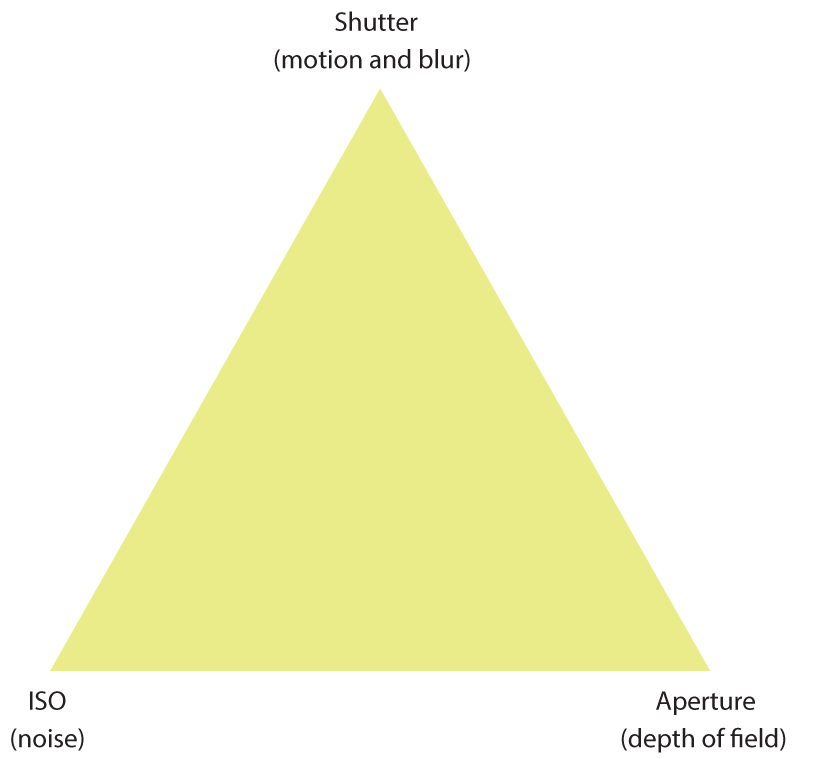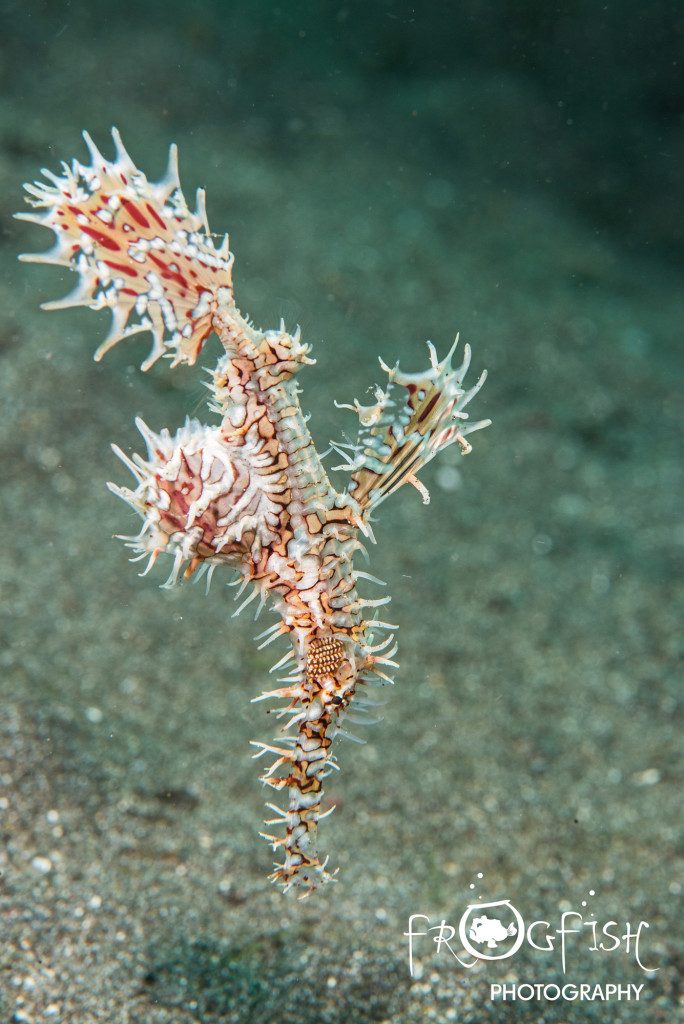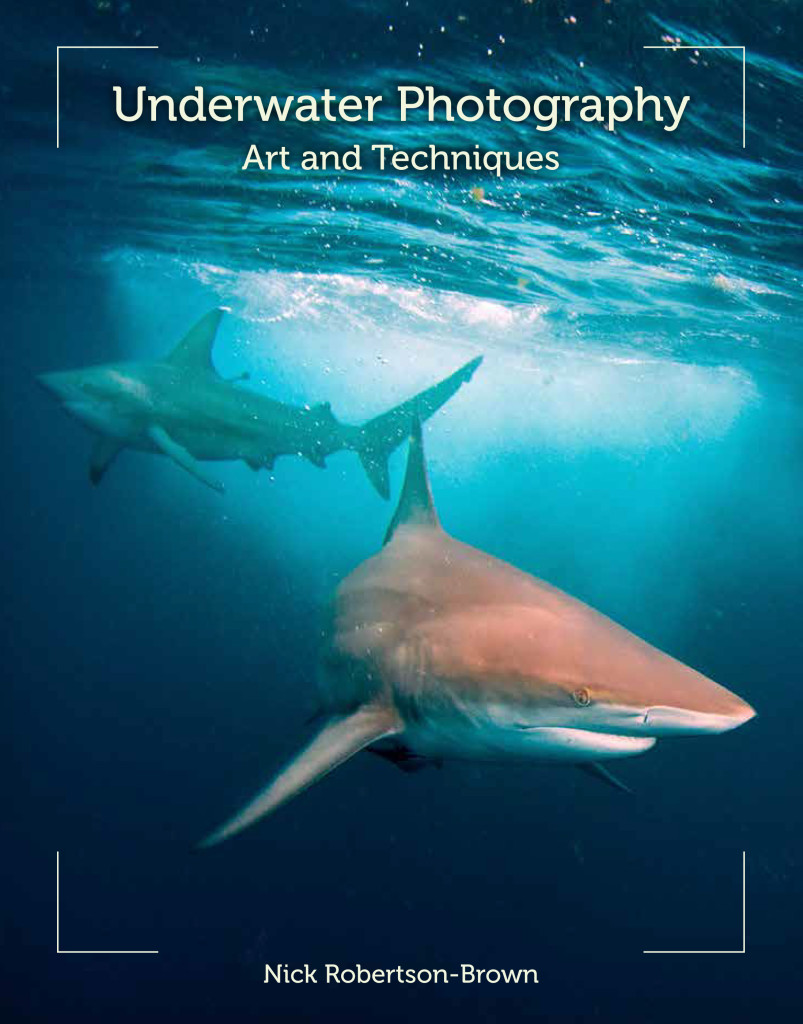News
Underwater Photography Essentials: Part 1

Tips, ideas and advice for budding underwater photographers
by Nick Robertson-Brown FRPS
Part 1: Getting to grips with your camera settings – Aperture
When you look at your subject underwater, without using artificial light, there are essentially three factors that you can change on your camera to create the image you want. These three factors are aperture, shutter speed and ISO and all three have an effect upon how the image will look. Each will have their own individual characteristic upon the outcome of your image, and usually, by changing one of these factors, one of the others will need to be adjusted to compensate for what you have done. In order to maintain the same amount of light in your image, the exposure value (EV), increasing the light from one of these factors will mean you need to decrease the light using one of the other two.
It is a case of balancing the light to get the right value for the image you want to create. How you balance this value will give you, the photographer, control of how you wish the image to look. In this first article, we are going to look at Aperture.
Aperture
The aperture is the space behind the lens through which the light enters the camera, and hence, the sensor. The aperture works very much in the same way as the pupil of the human eye. In bright light, the pupil will close down to a small round opening, hence restricting the amount of light that falls on the retina. As it gets darker, the pupil dilates to allow more light to enter the eye. The aperture of the camera’s lens can be opened and closed, just like the pupil of the eye, and if you have your camera in the auto setting, this is one factor the camera may use to change the exposure value. This is why I think it is important that you should use the manual setting so you have control of how you want to present your image.
Aperture Setting
The aperture setting is referred to as the f-stop or f-number, and the smaller the number, the larger the aperture. Mechanically, the size of the hole is determined by a circle of blades that cause the central aperture to open and close by the overlapping of these blades on each other. Closing the aperture will restrict the amount of light hitting the sensor and the f-number increases. This f-number is not just a random figure, but is in fact a ratio of the focal length of the lens to the physical size of the aperture. In most compact cameras there is no mechanical closing of an aperture but its attributes are produced electronically to give the same effect.
The figure above shows the f-value and all camera lenses are calibrated using the same f-stop scale. The range of aperture numbers does vary from one lens to another, with the greater range generally equating to the greater price. The scale, however, is always constant and each increase in f-stop number equates to half the amount of light that is allowed through to the sensor.
Depth of Field
Opening and closing the aperture, or decreasing and increasing the f-stop, would appear to be a simple way of changing the light level on the sensor. As the aperture is opened however, the depth of field is reduced, and this has a very noticeable effect upon the image. The depth of field is defined as the amount of the image which appears to be acceptably in focus, and changing the depth of field on your subject can create very different images.
As you can see from the above image, the pygmy seahorse is in sharp focus. The rest of the coral behind it is totally out of focus, and this has the effect of making the seahorse, your subject, pop out from the picture.
And again with this ghost pipefish, the subject is in focus, but the background is blurry and there can be no misunderstanding as to what the subject is.
This does not necessarily mean that you should always use a small depth of field to make your subject pop out, and there are times when the environment around the subject is important. This technique is used by many underwater photographers as it allows you to virtually eliminate any messy background by using a low f-stop number to create a small depth of field. This is ideal for when your subject will not come out into the open. The blurry background in an image is called “Bokeh”
Of course, sometimes you want to show the critter in its environment and to do this, you need to increase the f-stop (close down the aperture). As a result of closing down the aperture, the exposure value will go down as you are letting less light onto the sensor. Within the exposure triangle, there are two other factors you can adjust and I will be looking at these controls next time.
————————————————————————————————————————————————————
Do you want to learn more? You can pick up a copy of Nick’s book “Underwater Photography Art & Techniques” by clicking here.
Underwater Photography Courses
Contact Nick for information on the Frogfish Photography Complete Underwater Photography Award, designed for 1:1 and small group sessions to improve your underwater photography at your pace.
www.frogfishphotography.com | frogfishphotos@gmail.com | +44 (0)161 9177101
Gear News
Introducing the TR-80, IR-50 and CS-30 Regulators from DYNAMICNORD

Whether you are a beginner or a professional diver – with the three new main regulators from DYNAMICNORD, everyone will find their favourite regulator. They all look super stylish.
Excellent performance with the TR-80
Quality and performance are the be-all and end-all for regulators. It is not for nothing that the TR stands for Tec Reg. The innovative design of the TR-80 guarantees absolute reliability – even in ice-cold waters.

Perfect breathing effort at 0.8 J/l / certified for diving in waters below 10 degrees / structural design made of solid brass for best cold protection / membrane-compensated design with dry seal of the first stage / reduced exhalation effort thanks to optimized exhalation membrane and bubble deflector / adjustable Venturi (dive/predive) and adjustment knob for individual inhalation comfort / innovative design of the front cover prevents free-flow in strong currents or when diving with scooters / design made of sandblasted brass, matt chrome finish / 2 HP and 4 LP outlets / mouthpiece made of high-quality, anti-allergic silicone for maximum comfort.


Amazing underwater adventures with the IR-50
The IR-50 is the top regulator for advanced and experienced divers. Natural breathing is the essence of this regulator.

Ideal breathing effort at 0.8 J/l /certified for diving in waters below 10 degrees / compensated membrane / adjustable venturi (dive/predive) and adjustment knob for individual inhalation comfort/ outlet valve and deflector for minimum exhalation effort and reduction of bubbles on the face / design made of sandblasted brass, matt chrome finish / 2 HP and 4 NP outlets / mouthpiece made of high-quality, anti-allergic silicone for maximum comfort.


The Workhorse – our CS-30
For diving centres and diving beginners – the workhorse stands for strong construction, reliability and robustness. Perfect for your training.

Optimal breathing effort at 0.8 J/l /recommended for diving in waters above 10 degrees / non-compensated piston / adjustable venturi (dive/predive) / outlet valve and deflector for minimum exhalation effort and reduction of bubbles on the face / design made of sandblasted brass, matt chrome finish / 1 HP and 3 NP outlets / mouthpiece made of high-quality, anti-allergic silicone for maximum comfort.


Octopus OP-30
The OP-30 is the ideal addition to all DYNAMICNORD regulators. It is identical in construction to the CS-30.

The TR-80, IR-50, CS-30 (DIN & INT) regulators and the Octopus OP-30 are available from DYNAMICNORD dealers and in the online store.
DYNAMICNORD – Your Outdoor Companion.
Marine Life & Conservation
Paul Watson Released as Denmark Blocks Japan’s Extradition Bid

Renowned anti-whaling activist Paul Watson has been released from custody in Greenland after spending five months in detention. Denmark’s Justice Ministry rejected Japan’s request for his extradition, citing insufficient guarantees that his time already served in custody would be credited against any potential sentence.
The 74-year-old Canadian-American was arrested on July 21 in Nuuk, Greenland’s capital, when his ship docked to refuel. His arrest was based on a 2012 Japanese warrant related to a 2010 encounter in Antarctic waters. Japan alleged Watson obstructed operations and caused damage to a whaling research ship during efforts to disrupt illegal whaling. Watson has consistently denied these claims, maintaining his commitment to marine conservation.
Denmark, which oversees extradition matters for Greenland, concluded that while the legal conditions for extradition were met, the lack of assurances from Japan regarding time-served credit made extradition untenable.
In a video shared by his foundation, Watson expressed gratitude and relief, saying, “After five months, it’s good to be out… and good to know they’re not sending me to Japan.” He added that the most difficult part of his time in custody was being separated from his two young sons.
Watson is a pioneering figure in marine conservation, known for founding the Captain Paul Watson Foundation in 2022 after decades of activism with the Sea Shepherd Conservation Society. His bold efforts to defend marine life have earned him widespread support, including from celebrities and conservationists. His work has also been featured in the acclaimed reality TV series Whale Wars.
Watson’s lawyer, Jonas Christoffersen, praised the decision, stating, “We are happy and relieved that Paul Watson is now free.” He added that Watson is eager to reunite with his family and continue his vital work.
The arrest occurred while Watson’s vessel, the M/Y John Paul DeJoria, was en route to the North Pacific with a team of 26 volunteers to intercept a Japanese whaling ship. His foundation described the arrest as politically motivated and emphasized that Watson’s actions were focused on ending illegal whaling practices.
Japan resumed commercial whaling in 2019 after leaving the International Whaling Commission, asserting that whale meat is a cultural tradition. Conservationists, however, continue to challenge these practices, highlighting their impact on marine ecosystems.
Despite the challenges, Watson remains steadfast in his mission to protect marine life and bring attention to whaling practices. His dedication to ocean conservation has made him a globally respected advocate for the environment.
-

 News2 months ago
News2 months agoIconic SS United States to become the World’s Largest Artificial Reef
-

 News3 months ago
News3 months agoBook Review – 52 Assignments: Underwater Photography
-

 Gear News3 months ago
Gear News3 months agoDYNAMICNORD – New German diving brand enters the British market
-

 News3 months ago
News3 months agoExploring Cenote El Pit: A Diver’s Dream
-

 Gear News3 months ago
Gear News3 months agoTry BARE drysuits (and maybe even win one!) this Friday with Sea & Sea at North West Dive Fest
-

 Marine Life & Conservation3 months ago
Marine Life & Conservation3 months agoBook Review: Coral Triangle Cameos
-

 Blogs2 months ago
Blogs2 months agoDive the Egyptian Red Sea this Autumn with Regaldive
-

 News3 months ago
News3 months ago2024 Ocean Art Underwater Photo Competition Announced




















